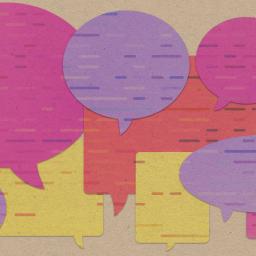 |
by Rhiannon Williams on (#6K2VY)
This is today's edition ofThe Download,our weekday newsletter that provides a daily dose of what's going on in the world of technology. Large language models can do jaw-dropping things. But nobody knows exactly why. Two years ago, Yuri Burda and Harri Edwards, researchers at OpenAI, were trying to find out what it would take to...
|
MIT Technology Review
| Link | https://www.technologyreview.com/ |
| Feed | https://www.technologyreview.com/stories.rss |
| Updated | 2025-12-18 10:18 |
 |
by Will Douglas Heaven on (#6K2QC)
Two years ago, Yuri Burda and Harri Edwards, researchers at the San Francisco-based firm OpenAI, were trying to find out what it would take to get a large language model to do basic arithmetic. They wanted to know how many examples of adding up two numbers the model needed to see before it was able...
|
 |
by Charlotte Jee on (#6K0Z4)
This is today's edition ofThe Download,our weekday newsletter that provides a daily dose of what's going on in the world of technology. Why shiny, high-tech solutions won't solve one of Africa's worst crises Herding- one of humanity's most foundational ways of life-is a pillar of survival in West Africa's Sahel. Migratory herders usher cattle between...
|
 |
by Cassandra Willyard on (#6K0WN)
This article first appeared in The Checkup, MIT Technology Review's weekly biotech newsletter. To receive it in your inbox every Thursday, and read articles like this first,sign up here. The diabetes medication metformin has been touted as a miracle drug. Not only does it keep diabetes in check, but it can reduce inflammation, curb cancer,...
|
 |
by Hannah Rae Armstrong on (#6K0PQ)
Hainikoye hits Accept and a young woman greets him in Hausa, a gravelly language spoken across West Africa's Sahel region. She has three new cows and wants to know: Does he have advice on getting them through the lean season? Hainikoye-a twentysomething agronomist who has followed animals," as Sahelians refer to herding, since he first...
|
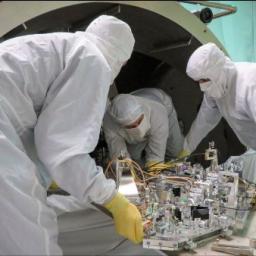 |
by Charlotte Jee on (#6JZY8)
This is today's edition ofThe Download,our weekday newsletter that provides a daily dose of what's going on in the world of technology. How scientists are using quantum squeezing to push the limits of their sensors When two black holes spiral inward and collide, they shake the very fabric of space, producing ripples in space-time that...
|
 |
by Will Douglas Heaven on (#6JZY9)
OpenAI's recent reveal of its stunning generative model Sora pushed the envelope of what's possible with text-to-video. Now Google DeepMind brings us text-to-video games. The new model, called Genie, can take a short description, a hand-drawn sketch, or a photo and turn it into a playable video game in the style of classic 2D platformers...
|
 |
by James Temple on (#6JZV9)
This article is from The Spark, MIT Technology Review's weekly climate newsletter. To receive it in your inbox every Wednesday, sign up here. There's a looming problem in the carbon removal space. By one count, nearly 800 companies around the world are exploring a wide variety of methods for drawing planet-warming greenhouse gas out of...
|
 |
by MIT Technology Review Insights on (#6JZVA)
Generative AI, though still an emergent technology, has been in the headlines since OpenAI's ChatGPT sparked a global frenzy in 2023. The technology has rapidly advanced far beyond its early, human-like capacity to enhance chat functions. It shows extensive promise across a range of use cases, including content creation, translation, image processing, and code writing....
|
 |
by Sophia Chen on (#6JZVB)
When two black holes spiral inward and collide, they shake the very fabric of space, producing ripples in space-time that can travel for hundreds of millions of light-years. Since 2015, scientists have been observing these so-called gravitational waves to help them study fundamental questions about the cosmos, including the origin of heavy elements such as...
|
 |
by MIT Technology Review on (#6JZAP)
Recorded on January 16, 2024 SKIP TO 2:00 FOR START OF SESSION An Inside Look at the 10 Breakthrough Technologies 2024 Speakers: Amy Nordrum, Executive editor of operations, Rachel Courtland, Commissioning editor, and Abby Ivory-Ganja, Senior engagement editor Every year for the past 20+ years, MIT Technology Review has selected a list of the breakthrough...
|
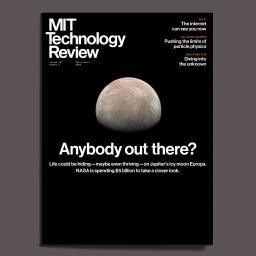 |
by Charlotte Jee on (#6JZ10)
This is today's edition ofThe Download,our weekday newsletter that provides a daily dose of what's going on in the world of technology. Introducing: the Hidden Worlds issue A hidden world is fundamentally different from the undiscovered. We know the hidden world is there. We just can't see it or reach it. Hidden worlds exist in...
|
 |
by William Miller ’51, SM ’52 on (#6JYYS)
For more than 20 million years, beavers have been, well, busy. They've been felling trees for that long, and building dams and lodges for at least the last few million years, earning a well-deserved reputation for industriousness and ingenuity. It seemed only fitting, then, that MIT saw fit to claim the beaver as its mascot...
|
 |
by Whitney Bauck on (#6JYYR)
Allison V. Thompkins, PhD '11, used to spend her days steeped in statistical analysis, digging into economic data to understand how the world works. These days, you're more likely to find her writing about how to modify prayer or meditation practices to make them more accessible for people with disabilities. From the outside, the shift...
|
 |
by Sally Kornbluth on (#6JYYQ)
As our alumni and friends know better than anyone, the intellectual excellence and bold ingenuity of the people of MIT are the Institute's greatest strength. While IAP supplied its welcome respite, the first part of the year also offered inspiring reminders of MIT's ability to make a powerful, positive difference in the world. Here are...
|
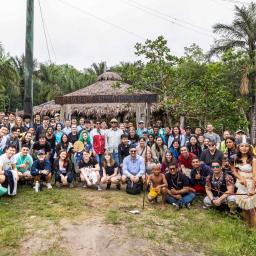 |
by Talia Khan ’20 on (#6JYYP)
We had just sat down to lunch with Dona Dada, an Indigenous Brazilian artisan, at her family farm in Sao Gabriel da Cachoeira. It was April of 2022, and my research colleagues and I were visiting to learn how she collects and processes plant fibers for use in her crafts. Before us were traditional foods...
|
 |
by Elisabeth C. Rosenberg on (#6JYYN)
William Warin Bainbridge Jr., Class of 1922, and Kenneth Tompkins Bainbridge, Class of 1926, grew up on Manhattan's Riverside Drive, the eldest of three sons of an upwardly mobile stationer who dabbled in real estate. Both went to MIT. And both would play important roles in World War II-one on the front lines at Normandy...
|
 |
by Joelle Carson on (#6JYYM)
Friends and colleagues of Paul Tompkins remember him as a person who never did anything halfway. Mountain climbing and scuba diving took him all over the world, and he constructed his own chain mail while taking medieval history courses at MIT. Space, though, was a lifelong passion: he was lead flight director for NASA's LunarCraterObservation...
|
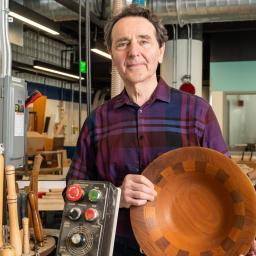 |
by Kathryn M. O’Neill on (#6JYYK)
When Fine Woodworking magazine printed its first issue in the winter of 1975, a bowl made by Irving Fischman, SM '72, PhD '75, was on the cover. Though he had started woodworking in the MIT Hobby Shop only a few years before, he had already become highly skilled at the craft and found a lifelong...
|
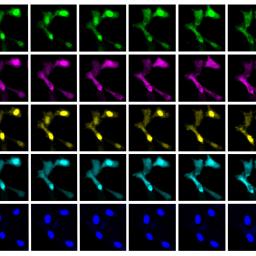 |
by Anne Trafton on (#6JYYJ)
Living cells are bombarded with molecular signals that influence their behavior. Being able to measure those signals and the response to them could help scientists learn much more about how cells work, including what happens as they age or become diseased. Labeling molecules inside cells with fluorescent proteins that glow in different colors has been...
|
 |
by Casey Crownhart on (#6JYW0)
Imagine a car that doesn't emit any planet-warming gases-or any pollution at all, for that matter. Unlike the EVs on the roads today, it doesn't take an hour or more to charge-just fuel up and go. It sounds too good to be true, but it's the reality of vehicles powered by hydrogen fuel cells. And...
|
 |
by Zeyi Yang on (#6JYVZ)
This story first appeared in China Report, MIT Technology Review's newsletter about technology in China.Sign upto receive it in your inbox every Tuesday. TikTok has become an essential part of the digital landscape. Whether or not it's ultimately banned in the United States (my bet is it won't be), these short videos have transformed large...
|
 |
by Bill Gourgey on (#6JYW1)
In 1900, the recently completed Hotel Fitzpatrick in Washington, Georgia, stood out for its grand Queen Anne architecture, but even more for its technology-it offered electricity, an elevator, and a telephone. When Alfred E. Burton, MIT's first dean (1902-1921), chronicled his expedition to Washington to record a total solar eclipse for Technology Review, he noted...
|
 |
by Avya Chaudhary on (#6JYW6)
Our world reflects a carbon divide, with the richest 10% of the population contributing half of net carbon emissions and the poorest 50% bearing the brunt of the climate crisis. So extreme is this climate inequality that marginalized communities are around five times more likely to be displaced by extreme disasters. This growing realization led...
|
 |
by Abdullahi Tsanni on (#6JYW5)
As she walks across Foray's lab on the third floor of The Engine, Ashley Beckwith's eyes brighten. Then, from an incubator, she pulls out petri dishes of wood-like cells that she and her team grew in the lab from black cottonwood plants. They envision turning those cells into wood-based perfumes, cosmetics, oils, and-someday-entire beams and...
|
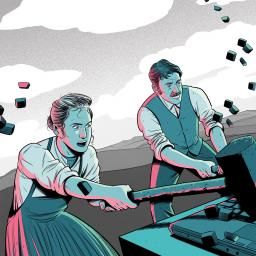 |
by Tom Humberstone on (#6JYW4)
Tom Humberstone is a comic artist and illustrator based in Edinburgh, Scotland.
|
 |
by Seth Mnookin on (#6JYW3)
At a showroom in a Boston suburb, Patrick Elisha sat down and began to play the opening measures of Rachmaninoff's Piano Concerto #2 to demonstrate why Steinway & Sons grand pianos are celebrated in concert halls around the world. Steinways are meticulously crafted instruments: it takes around 250 workers a year to assemble each grand...
|
 |
by Mat Honan on (#6JYW2)
A hidden world is fundamentally different from the undiscovered. We know the hidden world is there. We just can't see it or reach it. Something about this tantalizing proximity has fascinated us throughout history. The blank spaces on the map that Joseph Conrad referred to in Heart of Darkness were, to Europeans, hidden worlds. The...
|
 |
by Jonathan O'Callaghan on (#6JY86)
More than 9,000 metric tons of human-made metal and machinery are orbiting Earth, including satellites, shrapnel, and the International Space Station. But a significant bulk of that mass comes from one source: the nearly a thousand dead rockets that have been discarded in space since the space age began. Now, for the first time, a...
|
 |
by Charlotte Jee on (#6JY1H)
This is today's edition ofThe Download,our weekday newsletter that provides a daily dose of what's going on in the world of technology. China's next cultural export could be TikTok-style short soap operas Until last year, Ty Coker, a 28-year-old voice actor who lives in Missouri, mostly voiced video games and animations. But in December, they...
|
 |
by Bryan Gardiner on (#6JXWT)
Like a lot of Netflix subscribers, I find that my personal feed tends to be hit or miss. Usually more miss. The movies and shows the algorithms recommend often seem less predicated on my viewing history and ratings, and more geared toward promoting whatever's newly available. Still, when a superhero movie starring one of the...
|
 |
by Melissa Heikkilä on (#6JXWV)
This story originally appeared in The Algorithm, our weekly newsletter on AI. To get stories like this in your inbox first, sign up here. There has been some really encouraging news in thefight against deepfakes. A couple of weeks ago the US Federal Trade Commissionannouncedit is finalizing rules banning the use of deepfakes that impersonate...
|
 |
by Meg Duff on (#6JXWX)
Over a decade ago, Neal Patwari lay in a hospital bed, carefully timing his breathing. Around him, 20 wireless transceivers stood sentry. As Patwari's chest rose and fell, their electromagnetic waves rippled around him. Patwari, now a professor at Washington University in St. Louis, had just demonstrated that those ripples could reveal his breathing patterns....
|
 |
by Zeyi Yang on (#6JXWW)
Until last year, Ty Coker, a 28-year-old voice actor who lives in Missouri, mostly voiced video games and animations. But in December, they got a casting call for their first shot at live-action content: a Chinese series called Adored by the CEO, which was being remade for an American audience. Coker was hired to dub...
|
 |
by MIT Technology Review Insights on (#6JX7P)
In the ever-evolving landscape of customer experiences, AI has become a beacon guiding businesses toward seamless interactions. While AI has been transforming businesses long before the latest wave of viral chatbots, the emergence of generative AI and large language models represents a paradigm shift in how enterprises engage with customers and manage internal workflows. We...
|
 |
by Charlotte Jee on (#6JX4N)
This is today's edition ofThe Download,our weekday newsletter that provides a daily dose of what's going on in the world of technology. Trump wants to unravel Biden's landmark climate law. Here is what's most at risk. President Joe Biden's crowning legislative achievement was enacting the Inflation Reduction Act, easily the nation's largest investment into addressing...
|
 |
by Rebecca Ackermann on (#6JWZZ)
Selena Deckelmann has never been afraid of people on the internet. With a TV repairman and CB radio enthusiast for a grandfather and a pipe fitter for a stepdad, Deckelmann grew up solving problems by talking and tinkering. So when she found her way to Linux, one of the earliest open-source operating systems, as a...
|
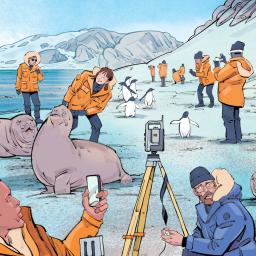 |
by Allegra Rosenberg on (#6JX01)
This is one of the least visited places on planet Earth and I got to open the door," Matty Jordan, a construction specialist at New Zealand's Scott Base in Antarctica, wrote in the caption to the video he posted to Instagram and TikTok in October 2023. In the video, he guides viewers through an empty,...
|
 |
by James Temple on (#6JX00)
President Joe Biden's crowning legislative achievement was enacting the Inflation Reduction Act, easily the nation's largest investment into addressing the rising dangers of climate change. Yet Donald Trump's advisors and associates have clearly indicated that dismantling the landmark law would sit at the top of the Republican front-runner's to-do list should he win the presidential...
|
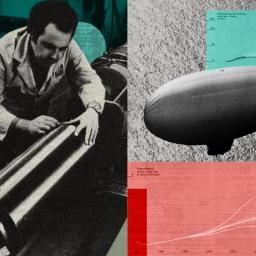 |
by Amy Nordrum on (#6JWFS)
MIT Technology Review is celebrating our 125th anniversary with an online series that draws lessons for the future from our past coverage of technology. In the nuclear magnetic resonance facility at Mississippi State University, three powerful magnets make it possible to see how atoms form bonds. Chemists there use the technology to design new polymers...
|
 |
by Allison Guy, SM ’23 on (#6JVG6)
MIT immunoengineer Michal Mikki" Tal remembers the exact moment she had an insight that would change the trajectory of her research, getting her hooked on studying a long-neglected disease that leaves millions of Americans suffering without treatment. It was 2017, and she was a Stanford postdoc exploring connections between her immune regulation research and immuno-oncology,...
|
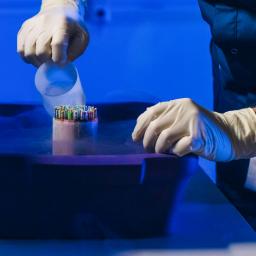 |
by Charlotte Jee on (#6JVAC)
This is today's edition ofThe Download,our weekday newsletter that provides a daily dose of what's going on in the world of technology. The weird way Alabama's embryo ruling takes on artificial wombs A ruling by the Alabama Supreme Court last week that frozen embryos count as children is sending shock waves" through the fertility industry...
|
 |
by Antonio Regalado on (#6JV8B)
This article first appeared in The Checkup, MIT Technology Review's weekly biotech newsletter. To receive it in your inbox every Thursday, and read articles like this first, sign up here. A ruling by the Alabama Supreme Court last week that frozen embryos stored in labs count as children is sending shock waves" through the fertility...
|
 |
by Anya Kamenetz on (#6JV6J)
The other day some preschoolers were pretending to be one of their favorite Sesame Street characters, a baby goat named Ma'zooza who likes round things. They played with tomatoes-counting up to five, hiding one, and putting it back. A totally ordinary moment exploring shapes, numbers, and imagination. Except this version of Sesame Street-called Ahlan Simsim...
|
 |
by Charlotte Jee on (#6JTD8)
This is today's edition ofThe Download,our weekday newsletter that provides a daily dose of what's going on in the world of technology. How tracking animal movement may save the planet Animals have long been able to offer unique insights about the natural world around us, acting as organic sensors picking up phenomena invisible to humans....
|
 |
by Antonio Regalado on (#6JTB1)
This spring I am looking forward to growing some biotech in my backyard for the first time. It's possible because of startups that have started selling genetically engineered plants directly to consumers, including a bright-purple tomato and a petunia that glows in the dark. This week, for $73, I ordered both by pressing a few...
|
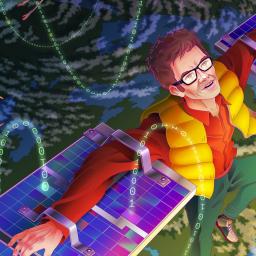 |
by Matthew Ponsford on (#6JT8E)
There was something strange about the way the sharks were moving between the islands of the Bahamas. Tiger sharks tend to hug the shoreline, explains marine biologist Austin Gallagher, but when he began tagging the 1,000-pound animals with satellite transmitters in 2016, he discovered that these predators turned away from it, toward two ancient underwater...
|
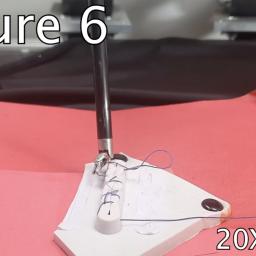 |
by James O'Donnell on (#6JT8D)
An AI-trained surgical robot that can make a few stitches on its own is a small step toward systems that can aid surgeons with such repetitive tasks. A video taken by researchers at the University of California, Berkeley, shows the two-armed robot completing six stitches in a row on a simple wound in imitation skin,...
|
 |
by Casey Crownhart on (#6JT8F)
This article is from The Spark, MIT Technology Review's weekly climate newsletter. To receive it in your inbox every Wednesday, sign up here. For someone who does not own or drive a car, I sure do have a lot of thoughts about them. I spend an inordinate amount of time thinking about transportation in general,...
|
 |
by MIT Technology Review Insights on (#6JSHQ)
With more than 5,000 branches across 48 states and 80 million customers, each with its own unique requirements to satisfy its customers' financial needs, a clear data strategy is key for JPMorgan Chase. According to Mark Birkhead, firm-wide chief data officer at JPMorgan Chase, data analytics is the oxygen that breathes life into the firm...
|